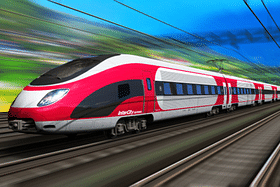BKC-Thane Tunnel includes a 7 km undersea tunnel at Thane Creek. It will be the first under sea tunnel to come up in the country.
With the higher speed up to 300 kmph, the train ride undersea is expected to last a few minutes only.
The National High Speed Rail Corridor Limited (NHSRCL) is preparing to commence preliminary work on the Vikhroli land, after the Supreme Court decided in favour of the government for the Mumbai-Ahmedabad bullet train project.
Of the total 508.17 kilometres of rail track between Mumbai and Ahmedabad, about 21 km is planned to be underground.
One of the entry points to the underground tunnel falls on the land in Vikhroli (owned by Godrej).
Now, NHSRCL may begin work to clear the 3.92 hectares at Vikhroli, barricade borders, and drill a 21-kilometre-long tunnel between Bandra-Kurla Complex (BKC) and Thane.
BKC-Thane Tunnel includes a seven km undersea tunnel for the Mumbai-Ahmedabad High Speed Rail corridor.
The undersea tunnel at Thane Creek (Intertidal Zone) will be the first under sea tunnel to come up in the country.
With the higher speed up to 300 kmph, the train ride undersea is expected to last a few minutes only.
The tunnel’s depth will range from 25 to 65 metres and will be 45 metres below Thane Creek.
NHSRCL released technical bids for tunnelling earlier this month. The construction is estimated to cost Rs 10,000 crore.
“We are aiming to start the initial works in the next two months and at the same time we shall place orders for tunnel boring machines to drill for a tunnel,” said NHSRCL official , a report from Hindustan Times stated.

The tunnel will be a single tube tunnel to accommodate twin tracks for both-up and down track. For the undersea work, 39 equipment rooms at 37 locations will also be constructed adjoining the tunnel location as part of the package.
In order to construct this tunnel, TBMs with a cutter head of 13.1 metre diameter will be used. Usually 5-6 metre diameter cutter heads are used for urban tunnels used in MRTS – Metro system.

Three tunnel boring machines will be used to make about 16 km of the tunnel portion and the remaining 5 km will be through the New Austrian Tunnelling Method.
This tunnel will be about 25 to 65 metres deep from the ground level and the deepest construction point will be 114 m below the Parsik hill, near Shilphata.
Three shafts at BKC (under package C1), Vikhroli, and Sawli at approximate depths of 36, 56 and 39 metres respectively will facilitate the construction.
Besides, an incline shaft of 42 metre at Ghansoli and tunnel portal at Shilphata will facilitate the construction of approximately 5 km of tunnel through NATM tunnelling method.
An undersea tunnel will be critical as this area is a protected sanctuary for flamingo and nearby mangroves.
Accordingly, rail tracks will be made undersea through a tunnel to ensure there no disturbance to existing ecosystem, said the NHSRCL website.
As of 23 February, NHSRCL had acquired 99.75 per cent of the land in Maharashtra, and 99.17 per cent of the overall land acquired for the 508-kilometre-long corridor.
The authorities will begin accepting bids by 29 March for civil construction projects including viaducts, bridges, tunnels, maintenance facilities at Thane, Virar, and Boisar, as well as connecting work for the Thane depot between Shilphata and Zaroli on the Gujarat-Maharashtra boundary.
India’s First Bullet Train Project
The High-Speed Rail operating at 320 kmph will traverse along west India’s landscape, covering 508.17 km distance between Mumbai and Ahmedabad in just about two hours.
This will save time compared to current travel time between the two terminal stations by about nine hours (by bus) or six hours (by conventional railways).
It will cover 155.76 km in Maharashtra, 4.3 km in the Union Territory of Dadra and Nagar Haveli and 348.04 km in Gujarat, with 12 stations en-route.
During the journey, the train will halt at 10 cities — Thane, Virar, Boisar, Vapi, Bilimora, Surat, Bharuch, Vadodara, Anand, Ahmedabad and Sabarmati.

According to the report prepared by NHSRCL and submitted to the Railways, the overall physical progress is 25.63 per cent as against the target of 30.06 per cent till January 2023, a shortfall of 4.43 per cent.
With the target shortfall of over 4 per cent, it would be tough to meet the August 2027 target to make the over 300-km-long route operational in Gujarat.
Since the project is much behind the schedule in Maharashtra, the Railways is exploring possibilities to make the Gujarat portion operational by 2027.
India’s first bullet train project is slated to hover around Rs 1.60 lakh crore and likely to touch Rs 2 lakh crore by the time of completion.


